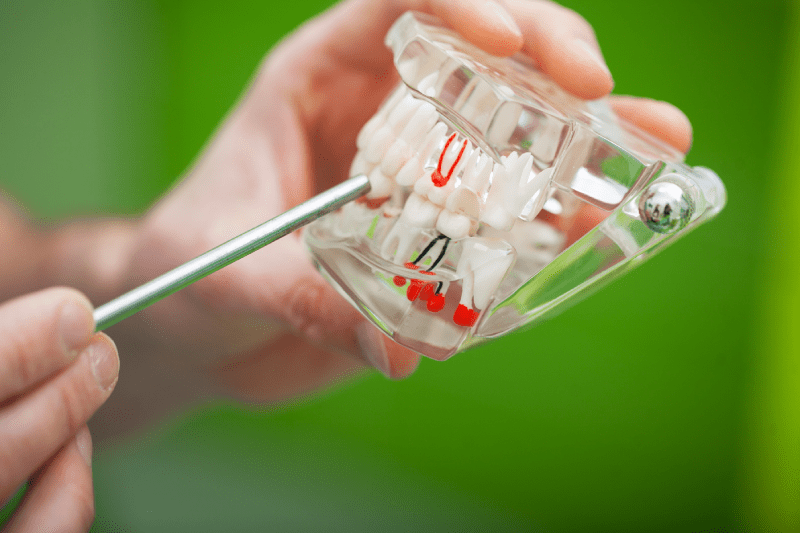What is a Dental Bridge and How Does It Work?
A dental bridge is a fixed prosthesis used to replace one or more missing teeth. It is named a “bridge” because it relies on the healthy teeth on either side of the gap (abutment teeth) to span the empty space. The abutment teeth are specially prepared by being reshaped and then covered with crowns to provide a stable foundation for the bridge. These crowns are connected to the artificial teeth (pontics) that will replace the missing tooth. This process restores both an aesthetic appearance and chewing function.
What is the Cost of Dental Bridges?
The cost of dental bridges in Istanbul varies depending on many different factors. The material the bridge is made of (such as zirconium, porcelain, or porcelain-fused-to-metal), the number of teeth to be replaced, the location of the clinic performing the treatment, and the dentist’s experience are the most important factors. Generally, zirconium bridges may have a higher cost than porcelain-fused-to-metal bridges. The most accurate price information will be determined after a detailed examination by a dentist.
What Factors Affect the Price of a Dental Bridge?
The main factors affecting the price of a dental bridge are the type of material used (porcelain-fused-to-metal, zirconium, all-porcelain), the length of the bridge, and the number of teeth to be bridged. In addition, the need for extra treatments (for example, tooth extraction or filling) before starting the main procedure can increase the price. The clinic’s technological infrastructure, the dentist’s level of expertise, and the clinic’s popularity are also important elements that determine the cost.
How Long Does the Dental Bridge Procedure Take?
The dental bridge procedure is usually completed in two or more visits. During the first session, the abutment teeth that will support the bridge are prepared, and impressions are taken. This session can last a few hours. In the second session, the prepared permanent bridge is tried on, and if it fits properly, it is permanently bonded. The total process, depending on the lab’s working speed and the dentist’s schedule, generally takes between 3 to 7 days.
What Materials Are Used for Bridges?
The main materials used for dental bridges are porcelain-fused-to-metal, zirconium, and all-porcelain. Porcelain-fused-to-metal bridges have been used for many years due to their durability and cost-effectiveness. Zirconium bridges have become increasingly popular due to their highly aesthetic appearance, biocompatibility, and strong structure. All-porcelain bridges are ideal for patients who have aesthetic concerns, especially for their front teeth.

What Are the Advantages of Zirconium Bridges?
Zirconium bridges have many aesthetic and functional advantages. Thanks to their translucent structure, they offer a very natural-looking appearance, similar to real teeth, and eliminate the grey reflections found in metal-supported bridges. Additionally, since zirconium is a biocompatible material, it does not cause allergic reactions or any discoloration of the gums. Due to their high durability, they can be used without problems for many years.
What Are the Characteristics of Porcelain Bridges?
All-porcelain bridges offer metal-free aesthetic solutions. They provide a transparent and vibrant appearance, as they can transmit light just like natural teeth. They are preferred for achieving an aesthetic result, especially for the front teeth. However, they may be less durable than porcelain-fused-to-metal or zirconium bridges, so their use on back teeth is limited.
Are Porcelain-Fused-to-Metal Bridges Still Used?
Yes, porcelain-fused-to-metal bridges are still widely used due to their durability and relatively affordable cost. The metal substructure provides strength to the bridge. However, they may not be suitable for patients with high aesthetic expectations, as the reflection of the metal can create a grey line at the gum line, and they do not transmit light like natural teeth.
Who Can Get a Dental Bridge?
A dental bridge can be applied to individuals who have one or more missing teeth and have healthy or restorable abutment teeth on either side of the gap. At the same time, the person’s overall oral and gum health must be good. Bridge treatment may not be suitable for patients with severe gum disease or very little bone support.
Which is Better: an Implant or a Bridge?
Implants and bridges are two common treatment options for replacing missing teeth. Implants allow the missing tooth to be replaced without touching the adjacent teeth and prevent bone loss by stimulating the jawbone. Bridges, on the other hand, are a faster and generally more affordable solution, but they require the reshaping of the adjacent teeth. The choice of treatment depends on the patient’s oral health, budget, and personal preference.
Is the Bridge Procedure Painful?
The dental bridge procedure is generally painless because the abutment teeth are numbed before being prepared and impressions are taken. No discomfort is felt during the procedure. However, it is normal to experience a slight sensitivity or pain for a few days after the procedure. This can usually be easily managed with painkillers and disappears in a short time.
Is Anesthesia Used?
Yes, local anesthesia is used during the dental bridge procedure. This ensures that the patient does not feel any pain or discomfort during the preparation of the teeth and other steps. Local anesthesia is sufficient for most patients, but in some cases or if the patient has high anxiety, the dentist may recommend additional methods such as sedation.
How to Care for a Dental Bridge?
Caring for a dental bridge is part of a daily oral hygiene routine. Teeth should be brushed at least twice a day, and floss should be used. To clean the area under the bridge, specially designed floss, bridge cleaners, or a water flosser (oral irrigator) can be used. Regular dental check-ups ensure the longevity of the bridge.
How Long Do Dental Bridges Last?
With good oral hygiene and regular dental check-ups, a dental bridge can last for 10 to 15 years or even longer. The lifespan of the bridge depends on the quality of the material used, the patient’s oral hygiene, and chewing habits. It is important to avoid hard foods to prevent the bridge from getting damaged or broken.
Do Bridges Affect Gum Health?
A properly designed and placed dental bridge does not harm gum health. However, if food accumulates around the edges of the bridge or the bridge does not fit properly, gum inflammation and other problems can occur. Therefore, it is important that the edges of the bridge fit tightly to the gum line and are easy to clean.
How Are Teeth Prepared Before a Bridge Is Placed?
Before a bridge is placed, the abutment teeth that will support the bridge are prepared to make room for the crowns. The dentist removes a certain amount of enamel and dentin from the outer surface of the tooth. This process ensures that the bridge appears the same size and shape as the natural teeth. After the preparation stage, a temporary bridge may be placed to prevent sensitivity.
When Should Bridges Be Replaced?
There are a few signs that a dental bridge needs to be replaced. These include; the formation of cavities in the teeth under the bridge, the bridge loosening or breaking, gum line recession, or the aesthetics of the bridge deteriorating. Your dentist will evaluate the condition of your bridge during regular check-ups and can determine when it is time for a replacement.
Do Bridges Cause Tooth Decay?
No, a properly made and well-cared-for dental bridge does not cause tooth decay. However, plaque can more easily accumulate around the teeth supporting the bridge, which increases the risk of decay. Regular and effective brushing and flossing are the best ways to prevent the formation of cavities.
How Do Bridges Look Aesthetically?
Thanks to modern materials used today (especially zirconium and all-porcelain), dental bridges provide extremely successful aesthetic results. They can be designed to have the same color and brightness as natural teeth, which makes the bridge difficult to notice.
Can Bridges Be Used with a Smile Makeover?
Yes, dental bridges can be used as part of a smile makeover treatment. Especially in cases where missing teeth need to be filled, bridges complement the overall smile design to achieve a more symmetrical and aesthetic result.
Which Clinics Are Popular in Istanbul?
Istanbul is a leading city in dental tourism and is home to many high-quality dental clinics. Popular clinics are generally distinguished by patient reviews, international accreditations, experienced dentists, and modern technological equipment. It is recommended to do comprehensive research to determine which clinic is best for you.
How Does the Process Work for Foreign Patients?
For foreign patients, the dental bridge treatment process is usually carried out in a more organized manner. First, the patient receives an online consultation by sending X-rays and photos from abroad. Then, a treatment plan and an estimated cost are determined. When the patient arrives in Istanbul, all appointments are scheduled in advance, and the entire treatment is usually completed within 1 week.

Do Bridges Affect Eating?
Dental bridges replace missing teeth, thus restoring chewing function and improving the ability to eat. It is recommended to consume soft foods for the first few days after the treatment, but after getting used to the bridge, you can eat normally.
Is There a Change in Speech?
Missing teeth can make it difficult to pronounce some sounds correctly. Dental bridges can improve speech by filling these gaps. There may be a slight adjustment period on the first day the bridge is placed, but this usually corrects itself within a few days, and speech returns to normal.
Do Dental Bridges Get Affected by Smoking?
Although smoking does not directly harm dental bridges, it can adversely affect gum health and shorten the lifespan of the bridge. Smoking can cause gum recession and make the abutment teeth under the bridge vulnerable. Therefore, it is important to quit smoking for a long-lasting bridge.
Do Dental Bridges Cause Sensitivity?
For the first few days after the bridge is placed, a temporary sensitivity to hot or cold may be experienced in the abutment teeth. This is normal and usually disappears in a short time. If the sensitivity continues for a long time, you should consult your dentist.
Can Patients with Gum Recession Get a Bridge?
Patients with mild gum recession can have a dental bridge, but this requires an evaluation by a dentist. In cases of severe gum recession and bone loss, alternatives such as gum treatments or implants may be more suitable than a bridge.
What is a Maryland Bridge?
A Maryland bridge is a conservative type of bridge that does not require the reshaping of adjacent teeth. This bridge is bonded to the teeth on either side of the missing tooth with metal or porcelain wings. It is advantageous in terms of aesthetics and preserving tooth structure, but it may not be as strong as traditional bridges.
How Do Traditional Bridges Work?
Traditional bridges are the most common type used to fill the gap of a missing tooth. The teeth on either side of the gap are used as abutments for the bridge and are covered with crowns. The artificial teeth (pontics) that make up the bridge are fixed to these crowns. This type of bridge offers high durability and stability.
What is a Cantilever Bridge?
A cantilever bridge is used in cases where there is an abutment tooth on only one side of the missing tooth gap. In this bridge, the artificial tooth (pontic) is attached to a single abutment tooth. It is generally less preferred for back teeth as it may be weak against chewing forces.
How Do Bridges Protect Teeth?
Dental bridges prevent adjacent teeth from shifting into the empty space, thereby preserving tooth alignment. This prevents the misalignment of teeth and the occurrence of chewing problems. It can also help support the jawbone by replacing the missing tooth.
How Many Visits Are Required for Bridge Treatment?
Generally, two or three visits are sufficient for dental bridge treatment. The first visit involves preparing the teeth and taking impressions, the second visit is for the try-on, and the third visit is for the permanent bonding of the bridge.
Is a Temporary Bridge Placed During Treatment?
Yes, a temporary bridge is placed after the teeth are prepared and until the permanent bridge is ready to prevent sensitivity and provide an aesthetic appearance. The temporary bridge also serves as a trial for the permanent bridge.
How Are Bridges Related to Systems Like All-on-4?
Systems like All-on-4 involve placing a full dental bridge on four implants placed in the jawbone. This is a treatment where bridges are combined with implants for patients with multiple missing teeth or those who are completely toothless. This method offers a more permanent and functional solution than traditional bridges.
Do Bridges Leave Gaps Between Teeth?
A properly designed and placed dental bridge does not leave any gaps between teeth. The edges of the bridge should fit tightly to the gum line, and the artificial teeth should be aligned with the natural teeth.
Are There Special Products for Cleaning Bridges?
Yes, there are special products for cleaning the areas under dental bridges. These include; specially designed floss that can pass under the bridge, interdental brushes with small brushes, and a water flosser (oral irrigator). These products help prevent plaque buildup.
What is the Best Season for Dental Bridge Treatment?
There is no specific season for dental bridge treatment. The treatment can be done at any time of the year. However, for international patients, it may be more logical to choose a time that fits their travel and vacation plans.

Do Bridges Cause Allergic Reactions?
Allergic reactions can occur in people who are allergic to some metals used in porcelain-fused-to-metal bridges. However, this risk is eliminated by using biocompatible materials like zirconium. It is important to inform your dentist if you have any allergies before starting the treatment.
What Are the Disadvantages of Dental Bridges?
The biggest disadvantage of dental bridges is that they require the preparation of adjacent healthy teeth. This is an irreversible procedure. Also, the abutment teeth under the bridge can decay or get damaged. Good hygiene and regular check-ups minimize these risks.
Does Gum Recession Occur After a Bridge Is Placed?
If the edge of the bridge does not fit snugly against the gum or is not cleaned properly, plaque buildup can lead to gum inflammation and, over time, gum recession. Therefore, it is very important that the bridge is placed correctly and that a good oral hygiene routine is maintained.
Do Zirconium Bridges Change Color Over Time?
Zirconium bridges are very successful in terms of color stability due to their porcelain surfaces. Because their surfaces are smooth, they have a low tendency to stain. However, habits like smoking, tea, or coffee can cause slight discoloration over time.
Is Dental Bridge Treatment Reversible?
No, dental bridge treatment is an irreversible procedure because the abutment teeth are prepared to make room for the bridge. Therefore, if there is a more conservative treatment option like an implant instead of a bridge, these alternatives should also be evaluated.
